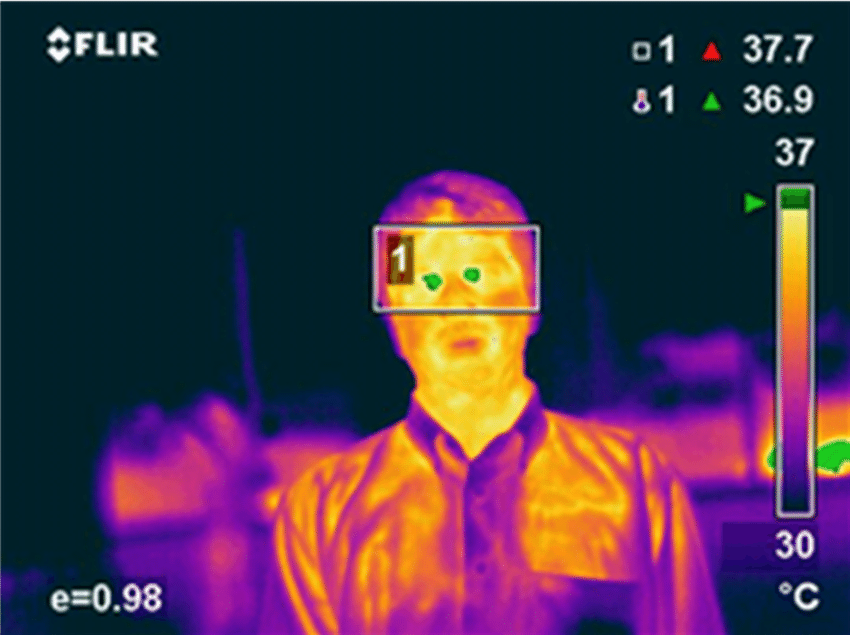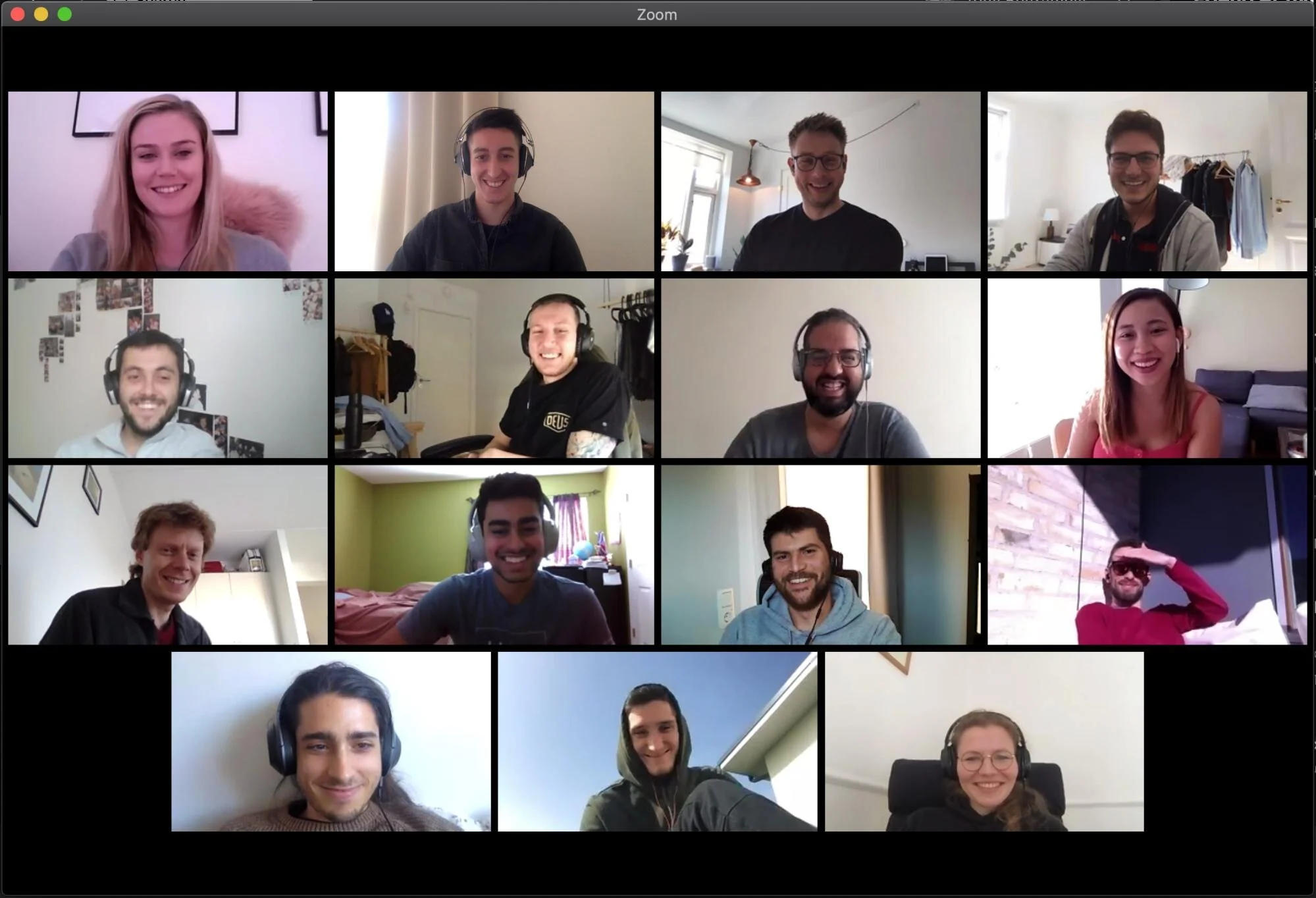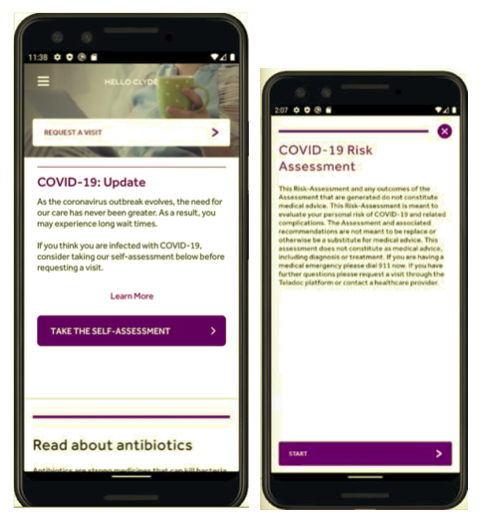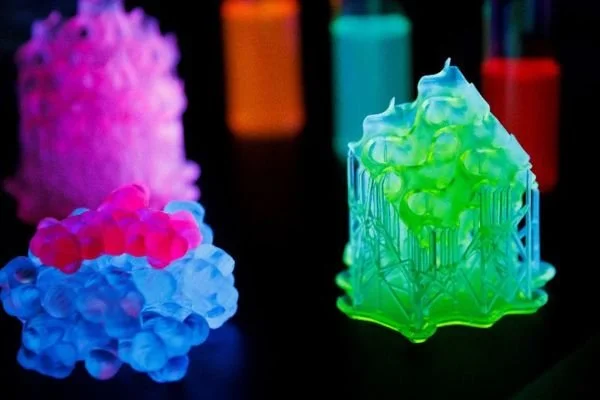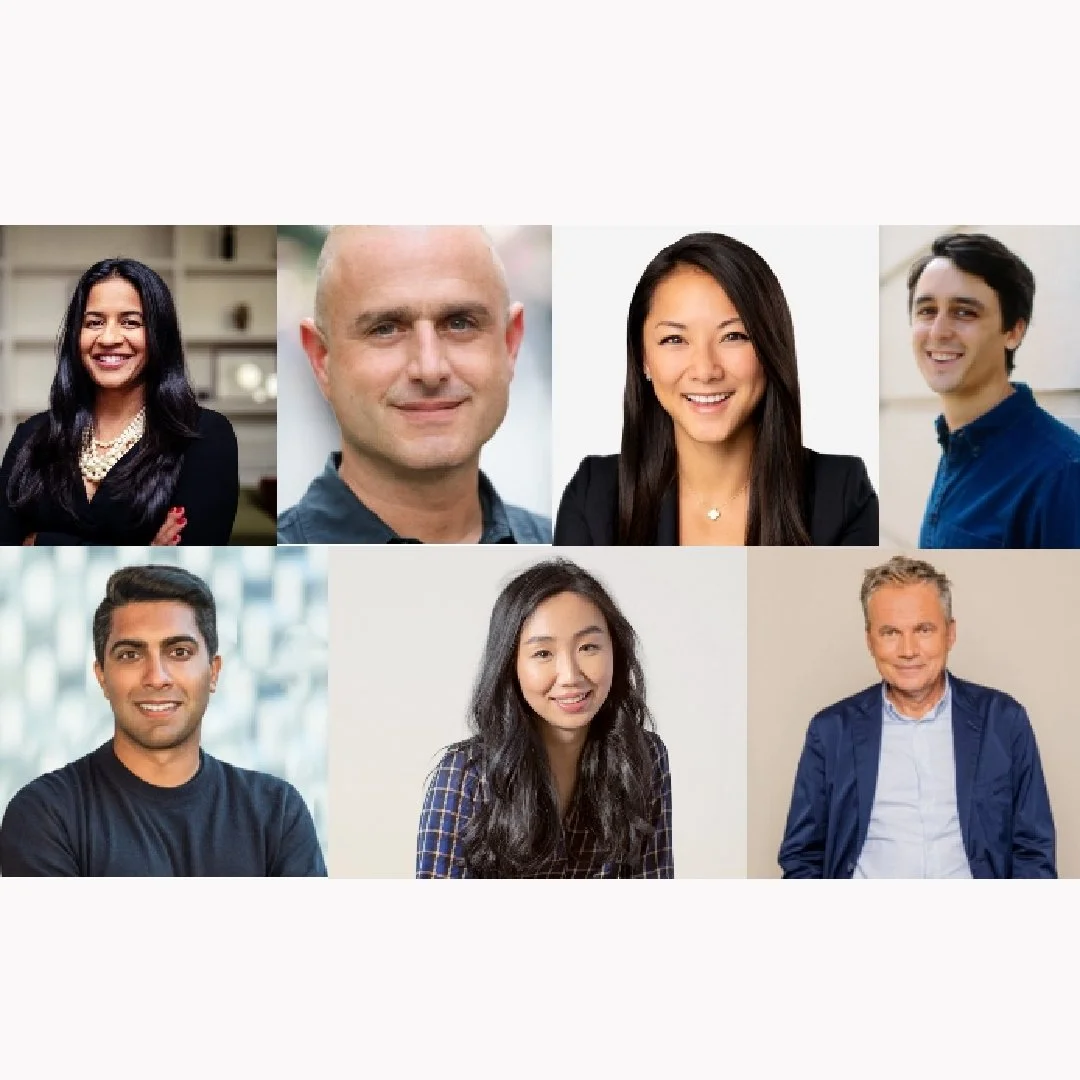Visual Technologies on the Frontline to Flatten the Curve
/LDV Capital invests in people building businesses powered by visual technologies. We thrive on collaborating with deep tech teams leveraging computer vision, machine learning, and artificial intelligence to analyze visual data. We are the only venture capital firm with this thesis. We regularly host Vision events – check out when the next one is scheduled.
© Flir
We are in scary and unprecedented times around the globe as tremendous volumes of people across almost all nations are diagnosed with COVID-19.
Nearly all experts agree that flattening the curve of the pandemic is necessary for preventing mass casualties and averting collapse of our global health systems. At the center of fighting this pandemic and flattening the global curve are visual technologies.
Visual technologies are any technology that captures, analyzes, filters, displays or distributes visual data. Typically leveraging computer vision, machine learning, and artificial intelligence.
Whether you are working from home on Zoom while your kids are watching Netflix, suffering a fever you fear may be COVID-19, or you are one of our amazing first line-of-defense healthcare workers in need of protective gear, visual technologies are being deployed to help.
Making the most of remote collaborating.
Fluorescence imaging, CT scans & more are central to testing & diagnosis
Testing is a critical, if not the most critical instrument recommended by health experts to flatten the curve. Without testing it’s like “fighting a fire blindfolded” according to the Chief of the World Health Organization, “test, test, test” he recommends.
Visual technology has been at the core of COVID-19 testing since the RNA sequence being used as the detection assay was determined using generic sequencing techniques which leverage fluorescence imaging. Fluorescence imaging uses fluorescent dyes or proteins as labels for molecular processes or structures to visualize gene expression, protein expression and molecular interactions, and more, in cells and tissues.
Companies like Genalyte have developed immunoassay blood tests that can detect COVID-19 antigens in about 15 minutes using optical sensor technology.
Additionally, chest CT scans and lung ultrasounds have been recognized as diagnostic tools for practitioners assessing the trajectory of COVID-19 in lungs. Researchers are using deep learning and computer vision to differentiate between communally spread pneumonia and COVID-19 in patients with respiratory distress.
"Machine learning applied to chest X-rays or CT scans has the potential to assist overwhelmed medical practitioners not only in diagnosing COVID-19, but also in predicting the trajectory of the disease - for example, who will recover, and who will soon need respiratory support. In addition to helping individual patients, this can help hospital systems to make best use of limited resources, saving still more lives." - Daniel K. Sodickson, MD, PhD. Vice Chair for Research, Dept. of Radiology & Director, Center for Biomedical Imaging, New York University Medical Center
Improved treatment of COVID-19 possible with visual tech
With our ability to connect remotely through video, voice and messaging - healthcare is now accessible at any moment, in any location with telemedicine providers. For COVID-19, and other highly contagious viruses, symptomatic people are able to connect with healthcare practitioners from their homes. This can protect healthcare workers, at-risk individuals and the public from exposure and helps flatten the curve.
© LDV Capital Insights
With expansion of telehealth coverage by the US’ Medicaid, UK’s NHS, Canada’s Medicare, France’s PUMA and many other government health systems and private insurers, telemedicine is also becoming the go-to for non-emergency visits.
In August 2018, our venture capital firm, LDV Capital which invests in people building visual technology business, published our annual Insights report which projected that the number of virtual medical consultations will surpass physical visits by 2024. Now, we are poised to surpass that milestone earlier.
Nearly all telehealth companies are experiencing significant growth these days from AI-enabled telehealth platform 98point6 and virtual care providers like Teladoc have reported doubling their volume. Virtual clinic Amwell has surged roughly 40% above normal in recent days. We believe a large percentage of these virtual visits will continue to occur via telehealth solutions long after quarantines are lifted.
© Teladoc Health
Jeff Nadler, CIO of Teladoc Health says “We are seeing real consumer behavior change because of this outbreak that will alter how people think about getting care long after this current crisis. With more people accessing care virtually, fewer people will be exposed in public waiting rooms, which we anticipate will have a positive impact on the curve.”
Additive manufacturing companies around the world are uniting in hopes of providing hospitals with the critical parts and gear that are in high demand. Most forms of 3D printing must leverage lasers and other optical tech for the creation of products.
3D printed devices have not yet been approved by any global regulators and many medical device designs are covered by copyright and patents. However, overwhelmed healthcare providers are looking for quick, alternative solutions for saving lives and 3D printing can assist.
Human ingenuity is the lifeblood of entrepreneurialism to find unique solutions to problems in society. In Northern Italy, for example, two local companies – Isinnova and Lonati SpA – stepped in and printed much needed respirator valves in just a few hours. Italian engineers also found a way to modify diving masks with respirator valves to create additional personal protective equipment (PPE) for medical workers.
Photo © Shapeways
New York-based Shapeways, a 3D printing marketplace is printing reusable face shields to supply frontline medical staff.
Greg Kress, the CEO of Shapeways said “The current manufacturing capacity is about 1,000 shields per day, and we are working on increasing it. One-time-use solutions are running short of supply and we will need reusable solutions over the next several weeks [that we will work to provide].”
As of March 26, 2020 266 vaccines are reportedly under discovery across the globe. Nearly all the studies require aspects of genetic sequencing, molecular imaging, and more visual technologies to be brought to fruition.
Preventing the Spread of COVID-19 Will Be Enabled by UV, Robots & Thermal Sensing
Short-wave ultraviolet light has a strong germicidal effect, it inactivates viruses by damaging the molecular structure of it. In medical centers, UV light is used to decontaminate rooms after patients with dangerous infections.
Photo © UVD Robots, a Denmark company that builds robotic based UV disinfection solutions
Autonomous robots guided by visual sensors and armed with UV germicidal lamps can deliver significant value. These UV disinfection robots can move from room to room and efficiently disinfect spaces with a zap of ultraviolet light. China used them extensively to help combat the spread of the virus and now hundreds of such robots are at work in more than 40 countries.
Xenex makes the LightStrike robot which uses pulsed xenon to generate virus-killing UV light. University of Nebraska Medical Center in Omaha is using UV light decontaminate medical supplies. And Danish company, UVD Robots, will roll out their robots over the next few weeks for testing at medical facilities around the US.
Such robots and UV devices can be also used in airports, railway and subway stations, cruise ships, schools, hospitals and other relatively structured public spaces.
Thermal Cameras Detect Fevers to Protect the Public
While COVID-19 is known to be contagious prior to symptoms being presented, an early onset fever is associated with the virus. Thermal imaging cameras have proven an effective tool to measure skin surface temperature and can, in many cases, identify individuals with Elevated Body Temperature (EBT). Thermal cameras have been used in public spaces—such as airports, train terminals, businesses, factories, and concerts — to detect EBT.
China and South Korea have been doing temperature checks prior to entering social spaces for weeks. Emirates Airlines has implemented thermal screening for all passengers headed to the US. And even an Atlanta, GA grocery store chain has started screening shoppers for fever before they can enter the store.
© Emirates in Dubai International Airport
At our 2018 LDV Vision Summit, we raised the topic with Amol Sarva, CEO & Co-Founder of Knotel and discussed how valuable it would be to track peoples’ health in co-working spaces via cameras, Amol agreed that would be amazing. He elaborated, saying the same camera that lets you into the office with facial recognition could also prevent you from entering the office because you may be sick and contagious.
In the near future, monitoring will be done by camera-enabled wearables & smart home devices to prevent a resurgence of COVID-19. Wearable and ambient smart devices that monitor health using, in part, visual technologies, will play a major role in long run monitoring and prevention.
Visual technologies will help flatten the curve today & proactively track health of society
Many of the technologies that we are depending on today to help us flatten the curve are leveraging cameras and other visual technologies to capture and analyze visual data. These visual technologies can make the difference between life and death for the millions of people who will be infected or exposed to COVID-19 over the course of this pandemic.
Even the visual technologies like FaceTime, Instagram and Hulu that are helping keep people at home, have the ability to help make this catastrophe less catastrophic.
We are always looking to partner with brilliant people to solve problems leveraging visual technologies, create value and hopefully improve our society together.
The reshaped world that emerges after we flatten the COVID-19 curve (and we will) will continue to rely on these visual technologies to work, entertain, teach, fight disease, rebuild our healthcare systems, enhance our supply chains and more; hopefully improving the world that we live in.
In the meantime, take a moment to marvel at the power of our visual technologies and, as experts recommend, stay home, wash your hands, and do your best to support our phenomenal healthcare workers and the millions of people losing their jobs in this time of crisis.

